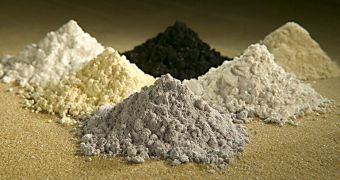A recent scientific investigation has revealed the existence of massive amounts of rare-Earth elements (RER) at the muddy bottom of the Pacific Ocean. Sediment layers at this location contain vast reserves of these precious substances, which are now mostly harvested and exported by China.
A recent crisis that affected the global market – when the Asian nation refused to ship out any amounts of these precious chemicals – revealed the extent of the dependency that the rest of the world has on China for providing RER.
These minerals are essential for the production of high-tech goods, such as microprocessors, LCD displays, LED, solar cells, speakers, headphones and a wide variety of other similar goods.
Some of the most familiar ones include praseodymium, cerium, lanthanum, neodymium, samarium, and gadolinium, out of a total of 17 chemicals. The new report indicates that countries neighboring the Pacific may look underneath the waves if they want to establish their own supplies.
In a paper appearing in the July 3 issue of the top journal Nature Geoscience, geologists from the University of Tokyo reveal that the minerals were deposited inside the sediment layers by the action of hot plumes stemming from deep hydrothermal vents.
Over tens of millions of years, these plumes removed RER particles from the waters, and included them in the debris that was depositing at the bottom of the ocean. The stuff is highly concentrated, the team explains.
A single, 2.3-kilometer square patch of ocean floor may contain sufficient amounts of RER to satisfy the current global needs for an entire year. “I believe that rare earth resources undersea are much more promising than on-land resources,” UT geologist and study leader Yasuhiro Kato explains.
The investigator and his group collected sampled from all over the place, from the vicinity of the Hawaiian Archipelago to the southeast Pacific. A total of 78 sites were covered, and RER concentrations were found to be similar to those in the clay pits Chinese miners work.
“The heavier rare earths tend to be ones that command greater price because of their scarcity,” explains the director of the US Department of Energy’s (DOE) Ames Laboratory, in Iowa, Alex King. He is referring to the fact that sea deposits contain twice as much of the element dysprosium than land sources.
Despite the fact that the research provides a way out of Chinese monopoly, it does pose huge challenges, such as for example actually extracting the precious stuff from great depth, Science News reports.
“I don’t understand how this can be expected to be an economic way to recover rare earth,” Daniel Cordier says. He holds an appointment as a mineral commodity specialist at the Reston, Virginia-based US Geological Survey (USGS) National Minerals Information Center.

 14 DAY TRIAL //
14 DAY TRIAL //